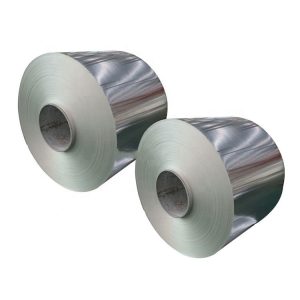How are stainless steel coils made?
03-18-24
Stainless steel coil is a kind of metal material widely used in various industrial fields, and its manufacturing process involves many links and complex processes. In this article, we will explore how stainless steel rolls are made and the key steps involved in their manufacturing process.
1) Raw material preparation
The main raw material of stainless steel coil is stainless steel sheet. The manufacture of stainless steel plates requires iron, chromium, nickel and other elements, of which the content of chromium is at least 10.5% to ensure that the stainless steel has the characteristics of corrosion resistance. In the production process, these raw materials need to be smelted, refined and other processes to obtain high-quality stainless steel sheets.
2) Smelting and pouring
The treated raw materials are put into the blast furnace for melting, and the raw materials are fully melted and mixed evenly by controlling the melting temperature and time. Then the molten steel is poured into the mold and poured to form a steel ingot.
3) Hot rolling
Hot rolling is an important step in the process of stainless steel coil manufacturing. First, the stainless steel sheet is sent to the hot mill for heating, when the temperature reaches a certain degree, the sheet begins to soften, and then through the extrusion of the roll, so that it gradually deformed into the desired thickness. In the process of hot rolling, parameters such as temperature, rolling speed and rolling force need to be strictly controlled to ensure product quality.
4) Pickling and annealing
Hot rolled stainless steel coils need to be pickled and annealed. The purpose of pickling is to remove surface oxides and impurities, so that the surface becomes smooth and clean. Annealing is to eliminate the stress generated in the rolling process and improve the plasticity and toughness of the material.
5) Cold rolling
After pickling and annealing, stainless steel coils need to be cold rolled. Cold rolling is carried out at a lower temperature, through the extrusion of the roll, the stainless steel coil is further deformed to achieve the required precision and surface quality. In the process of cold rolling, parameters such as rolling speed, rolling force and temperature should be strictly controlled to ensure product quality.
6) Finishing and packaging
Finally, cold-rolled stainless steel coils need to be finished and packaged. Finishing includes cutting, straightening, deburring and other processes to ensure the dimensional accuracy and appearance quality of the product. Packaging is to protect the product from damage during transportation and storage.
In short, the manufacturing process of stainless steel coil involves raw material preparation, hot rolling, pickling and annealing, cold rolling, finishing and packaging. In each link, the process parameters need to be strictly controlled to ensure product quality. At the same time, with the continuous progress of science and technology, stainless steel coil manufacturing technology is also constantly developing, providing more high-quality materials for all walks of life.






